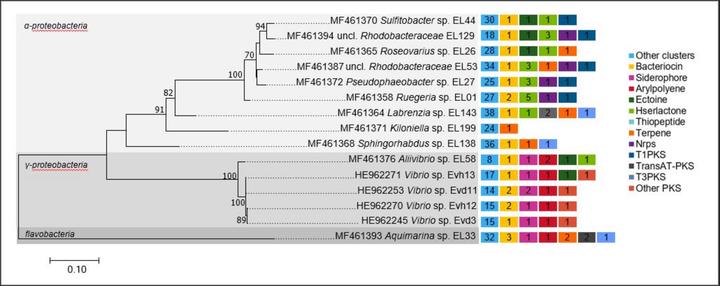Bioactive secondary metabolites from octocoral-associated microbes: new chances for blue growth
 BGCs identified in coral’s bacterial symbionts.
BGCs identified in coral’s bacterial symbionts.Abstract
Octocorals (Cnidaria, Anthozoa Octocorallia) are magnificent repositories of natural products with fascinating and unusual chemical structures and bioactivities of interest to medicine and biotechnology. However, mechanistic understanding of the contribution of microbial symbionts to the chemical diversity of octocorals is yet to be achieved. This review inventories the natural products so-far described for octocoral-derived bacteria and fungi, uncovering a true chemical arsenal of terpenes, steroids, alkaloids, and polyketides with antibacterial, antifungal, antiviral, antifouling, anticancer, anti-inflammatory, and antimalarial activities of enormous potential for blue growth. Genome mining of 15 bacterial associates (spanning 12 genera) cultivated from Eunicella spp. resulted in the identification of 440 putative and classifiable secondary metabolite biosynthetic gene clusters (BGCs), encompassing varied terpene-, polyketide-, bacteriocin-, and nonribosomal peptide-synthase BGCs. This points towards a widespread yet uncharted capacity of octocoral-associated bacteria to synthetize a broad range of natural products. However, to extend our knowledge and foster the near-future laboratory production of bioactive compounds from (cultivatable and currently uncultivatable) octocoral symbionts, optimal blending between targeted metagenomics, DNA recombinant technologies, improved symbiont cultivation, functional genomics, and analytical chemistry are required. Such a multidisciplinary undertaking is key to achieving a sustainable response to the urgent industrial demand for novel drugs and enzyme varieties.